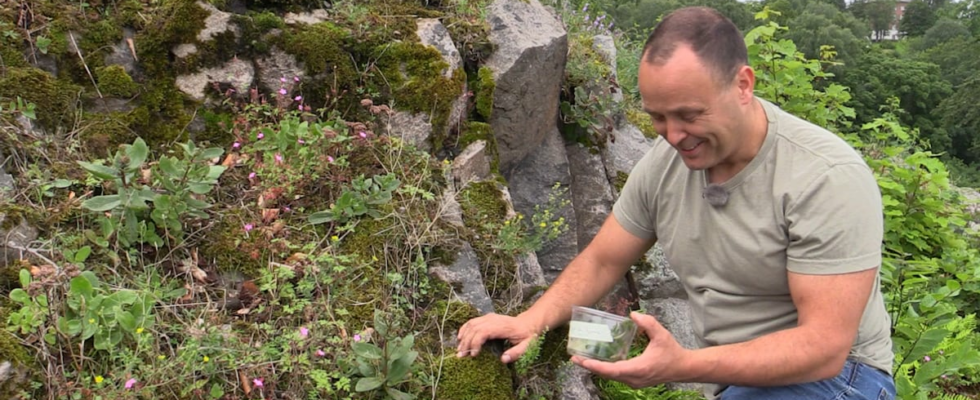In summary, Magnus Jakobsen is Norway’s only breeder of endangered insect species and has for the past four years worked with the breeding of the cliff blue veng, one of Norway’s most endangered insect species. Jakobsen places larvae along the walls of Fredriksten Fortress in Halden, with the hope that they will become full-fledged cliff bluewings next summer. Since the start in 2021, the population has grown from a few dozen to tenfold, and Jakobsen now has around 600 eggs that can potentially hatch in the future. Klippeblåvengen was common in many places in Norway until the 1970s, but is now only found naturally in Halden municipality. Due to the great uncertainty surrounding the population, senior adviser in the Norwegian Environment Agency, Per Johan Salberg, believes that similar projects are important to be able to preserve species. The summary is made by an AI service from OpenAi. The content is quality assured by news’s journalists before publication. – They are not very big, but they are, as we say in Southern Norway, “very naked”. That’s what Magnus Jakobsen says as he picks some small larvae from a plastic cup. The larvae will be laid along the walls of Fredriksten Fortress in Halden. Jakobsen is Norway’s only breeder of endangered insect species. For the past four years, he has worked with the breeding of perhaps Norway’s most threatened insect species, the cliff bluewing. RARE: The cliff bluewing is one of Norway’s most threatened species and has been protected since 2007. Photo: Espen Bierud / news – That we in the richest country in the world should let things die out while we sit and watch is beyond my understanding. Almost extinct Along the fortress, nearly 100 larvae will be laid out, which will hopefully become full-fledged cliff bluewings next summer. Since the start in 2021, the stock has grown from a few dozen to tenfold. At the time of writing, Jakobsen has around 600 eggs that could potentially hatch in the future. – The bluewing is part of our bio-capital, and just like cultural capital, it requires us to take care of it. If not, the world will actually become a little poorer, says Jakobsen. SMÅ: The larvae will hopefully become full-fledged bluewings during next summer. Photo: Håkon Hov Martinsen / news Klippeblåvingen was common in many places in Norway until the 1970s. When heavy rainfall and development hit large parts of the population. Today, he can only be found naturally in Halden municipality. He has also previously been found in Tvedestrand, but has not been seen there for many years. That time, the discovery of the summer bird caused a larger cabin project to be stopped. As early as 2012, counting of the eggs of the blue-winged bluewing was started in order to follow the development of the population. Vulnerable to weather Per Johan Salberg is a senior adviser in the Norwegian Environment Agency and has been a support player for Jakobsen’s project. He tells of great variations in the population. – He is very vulnerable to the variations in weather between seasons. A couple of bad seasons can wipe out the species completely, says Salberg. Due to the great uncertainty surrounding the stock, he believes that similar projects are important to be able to preserve species. – Unfortunately, it is the case that too many species have to be bred because the population has become so small. – Modern environmental protection Jakobsen’s work for the klippe bluewing has also received attention. Together with news on this rainy day are photographer Pål Hermansen and biologist Markus Lindholm. They write a book about summer birds, and think he has saved the cliff bluewing in Norway. INTEREST: Markus Lindholm (TV) and Pål Hermansen have followed the work to increase the population of the cliff bluewing closely. They are now working on a book about summer birds. Photo: Filippa Torjusen / news – It’s so cool. What Magnus is doing is completely at odds with what modern environmental protection is all about, says Lindholm. How the larvae that are released this summer will fare is uncertain, but they will already see the results next summer. – We hope this is the beginning of a new way of managing the threatened insect, says Jakobsen. Published 23/07/2024, at 16.17
ttn-69
Magnus Jakobsen may have saved the summer bird cliff bluewing from extinction – news Østfold – Local news, TV and radio

